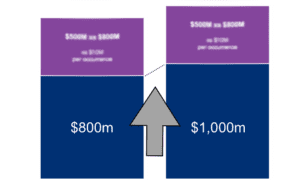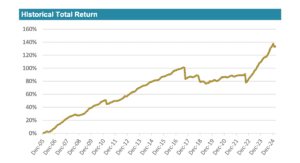HM Treasury announces final reform package following review of Solvency II

A version of this article was first published on Thomson Reuters Regulatory Intelligence.
The Treasury’s plans to reform Solvency II have entered their next phase after it published the results of its April 2022 consultation. This coincided with its Autumn statement, signifying the importance attributed to Solvency II reforms within the Government’s wider plans to create a vibrant post-Brexit economy.
A reassessment and loosening of certain aspects of the current regulatory framework are expected to release significant amounts of capital, enabling insurers to invest in illiquid assets in the real economy. Aviva estimates it could make at least £25 billion worth of capital investment over the next 10 years across the UK if the reforms go ahead. The ABI view is that the changes would allow industry to invest over £100 billion over the same period in productive finance, including UK social infrastructure and green energy supply.
The Treasury argues that post-Brexit freedoms to change laws inherited from the EU mean that it can create a Solvency II regime that is better tailored to the UK insurance market. Risk margin reforms undoubtedly reflect widespread agreement that the current rules are deficient.
Changes proposed by the PRA to fundamental spread (FS) methodology have not, however, made it into the final package. PRA concerns that Solvency II reforms must maintain the overall integrity of the regime have clearly been overruled by the Government on this occasion. It will be interesting to see how the PRA reacts over the coming months and years, including in its interactions with future governments.
While the Treasury’s proposals indicate a clear direction for reform, it could be some time until the detail is known. Some reports suggest it could be the end of 2024, or possibly 2025, before the changes come into force.
Background
There has been long-standing debate on the suitability of certain aspects of the current Solvency II regime for the UK insurance market. For example, the current methodology for calculating the risk margin is widely criticised for its unnecessarily burdensome effect on life insurers.
However, whilst there is general agreement that reforms to Solvency II could help establish a more appropriate regime for UK insurers, there has been less agreement on how exactly it needs to change. The PRA, in particular, has argued for caution in making changes to the Solvency II regime that release capital for investment but do not meet with the need for prudence, consistent with its safety and soundness and policyholder protection objectives. In a speech given in July 2022, Sam Woods of the PRA stated as follows:
“Brexit gives us an opportunity to rewrite the insurance regulations we inherited from the EU – and in doing so help drive further investment in the economy. But we need to be clear that this is not a free lunch. If changes simply loosen regulations which were over-cooked by the EU, without tackling other areas where regulations are too weak, then we are putting policyholders at risk.”
In an effort to build consensus, the Treasury released a consultation paper on 28 April 2022 calling for feedback on four key areas for reform:
a substantial reduction in the risk margin;
reforming the FS of the matching adjustment;
increasing investment flexibility for matching adjustment portfolios; and
reducing unnecessary reporting and administrative burdens.
Simultaneously, the PRA issued a discussion paper (DP2/22) setting out its views on the Treasury’s proposed reforms to the risk margin and matching adjustment. In a feedback statement (FS1/22), also issued on the same day as the government’s Autumn Statement, the PRA notes its support for the objectives of the Solvency II review but stops short of saying it supports the outcome.
HMT package of reform
The Treasury’s reform package carries over most of the proposals put forward in its consultation paper, with some notable differences.
Risk margin
Unsurprisingly, changes to the risk margin are going ahead, including a 65% reduction for long-term life insurers under recent economic conditions. The Government anticipates that this change will, amongst other things, free up significant amounts of capital, removing a barrier to lower product prices and higher annuity yields and reduce the volatility of life insurers’ balance sheets.
For general insurance business, the reduction will be around 30%.
Fundamental spread
The “most challenging element of the debate” was on the construct of the FS. The PRA wants to change the current methodology to reflect various concerns, including that the FS does not, in its view, allow fully for uncertainty around credit risk. The Treasury has rejected the PRA’s proposals on the basis that it has been impossible to reach a consensus, deciding to leave the design and calibration of the FS as it stands. It will, however, allow the
PRA to use three new measures aimed at safeguarding policyholders:
the introduction of new stress test requirements;
requiring nominated senior managers with formal regulatory responsibilities under the SMCR to sign an attestation that the firm’s determination of the FS, as recognised in its accounting records, properly reflects all retained risks; and
allowing insurers to apply a higher FS on a voluntary basis (which would presumably be done in response to a senior manager having concerns about signing the attestation).
The sting in the tail for firms of preserving the current FS methodology may be the introduction of a new formal attestation requirement. There is no confirmation yet of how often this attestation will be needed and of what it will need to cover. However, the personal liability that attaches to the senior manager who is responsible for giving the attestation means that processes will need to be established to safeguard their position and that of the firm. Careful consideration will need to be given, for example, to how the attestation is drafted and appropriate diligence should be conducted to obtain the requisite level of comfort in the statements that are being made.
It is also possible that the current reforms are introducing political risk into the system. Specifically, if a new government were formed, can anyone say with certainty that the PRA would not convince them that the current reforms have unduly weakened the regulatory regime overall? Given its clear stance on this issue, it is not difficult to imagine the PRA at least raising the issue.
Increasing investment flexibility
The Government is taking forward proposals to lift some of the current restrictions on assets that can be brought into firms’ matching adjustment portfolios. In particular, requirements that cash flows from matching adjustment portfolios must be fixed will be replaced by a requirement that cash flows are “highly predictable”. Additional flexibility to include assets with prepayment risk or construction phases will also broaden matching adjustment eligibility.
These changes, together with the changes to the risk margin, are expected to free up capital that could be used to increase insurer investment in long-term productive assets, most notably in infrastructure. Indeed, some major UK life insurers have already publicly said that this is what they intend to do. It is also hoped that there will be less need for asset restructuring to meet matching adjustment criteria.
Reducing reporting and administrative burdens
As part of its efforts to “slash red tape lingering from the EU”, the Government is introducing certain changes aimed at reducing the administrative burden on firms and creating a more favourable environment for smaller insurance firms.
These include removing requirements for UK branches of overseas insurers to calculate branch capital requirements and to hold assets locally to meet those requirements. This is an issue that came to the fore as a consequence of groups restructuring to mitigate the impact of Brexit. The argument in support of this change is that a branch capital requirement is not needed if the “parent” firm is properly capitalised under its home state’s regulatory regime. More generally, the PRA has also indicated, following its consultation earlier this year, that it expects to be able to reduce the reporting burden for insurers significantly as part of the reforms.
The Treasury also intends to increase the thresholds for the size and complexity of insurers before they become subject to the UK’s on-shored version of Solvency II.
Further observations
Additional points raised by the Treasury’s package of reforms include the following:
Despite suggestions in April’s consultation paper that the Government might look to restrict the use of some assets that are released from the matching adjustment under these reforms (eg, to require their investment in infrastructure), nothing in its response suggests this will happen.
Until the drafted rules and regulations have been released, we do not have a detailed picture of what the final reforms will look like. As always, the devil may be in the detail (for example, is some elaboration of what “highly predictable” means to be offered?) although it seems unlikely that significant inroads will be made into the commitments made by the Treasury.
What does seem clear is that the Government is not content to let the PRA make all the rules needed to implement these reforms, and therefore it intends to legislate on certain aspects of the proposed reforms that it feels strongly about, such as the risk margin.
It will nonetheless be interesting to see how the PRA responds to the Treasury’s package of reforms given its clear reservations over some of the changes.







